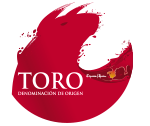To some it is the Noble Rot. To others it is an ugly scourge that destroys months of careful cultivation, and the dreams of many a small wine-maker. The Botrytis cinerea fungus rots grapes and taints the juice. If your intention is to create a sweet sauternes-like dessert wine, Botrytis is not a problem – in fact, it can be essential. But if, like many of the world’s grape-growers, you want something lighter, the first flush of Botrytis is a major sign of trouble. "It can be devastating," says Peter Osbourne, vineyard owner and chair of the local wine industry council in Langhorne Creek, South Australia. "If you’re not careful, you can lose the lot."
Botrytis spores can be a constant presence in a vineyard, but the grapes become susceptible to infection only during specific climate conditions. Humid conditions are ideal, and certain grape varieties, such as chardonnay and semillon, are more vulnerable than others. Every year, many growers choose a blanket approach and spray fungicide at the documented peak danger time, which is when the vines flower, around October and November in Australia. But this is an inexact science. In 2001, abad Botrytis year for Australia, the fungus cost the nation’s wine industry A$20m (£7.6m).
So, a group of scientists in Australia has developed a new chip-based vineyard micro-climate sensing system. In fact, this system should help not only with preventing Botrytis infection, but also with saving water, and in choosing the right location to plant a grape variety. Smaller wine-makers in particular should benefit, they say. Because as well as providing much more detailed climate information than is possible from existing weather stations, the system should be cheap – ideally less than A$1,000. The cost of a weather station – up to about A$9,000 – can be prohibitive. Many grape-growers can’t afford one, says Tom Adams, who also has vines in the Langhorne Creek region.
Motorola Australia and the Cooperative Research Centre (CRC) for microelectronics, based in Queensland, have developed the system. At its heart is a tiny chip, measuring 4mm square, that can measure leaf wetness, humidity, temperature, light, wind speed and wind direction. The idea is that hundreds of these "nodes" would be distributed around a vineyard to gather detailed information about climate variations. Using mobile phone technology, the nodes would talk to each other, and then transmit their data on to software that can sound an alert if, anywhere among the vines, the conditions are just right for botrytis. "If farmers have the information from this micro-climate data, they can whizz out there immediately and spray the area that needs it with a fungicide," says Steve Davis, of the CRC.
But the Australian team isn’t the only one to see a need for micro-climate detection for farmers. In the US, chip-maker Intel is working on a similar networked node system to detect temperature variations. The field work is going on in Oregon, famous for its pinot noir.
"Intel has identified wireless sensor networks as an interesting technology that is likely to have a profound impact on the computing world," says Intel’s Richard Beckwith, who has been involved in the vineyard trials. "My group identified agriculture as a likely first point of adoption and we have, as they say, drilled down in that domain." But Intel has no plans as yet to commercialise the technology, he says.
The first small-scale trial of the Australian system recently took place among chardonnay vines at the Yarra Glen vineyard in the Yarra Valley, Victoria. Probably no vineyard in this region has escaped at least some Botrytis infection, says Chris Messerle, Yarra Glen’s manager. The six-month project finished with the end of the growing season in March, and it showed that the nodes collected data accurately about every 15 minutes, talked to each other, and that the software, created by Andrew Hamilton at the Victoria state government’s department of primary industries (working as a member of the CRC), would produce a simple response, telling the grower that they needed to worry about Botrytis – or they didn’t. "It was a proof of concept, and it showed that the system worked," says Mr Hamilton. But more work is now needed to properly validate the outbreak-prediction model in Australia, he says.
That predictive model was created by a team in the US and validated in vineyards in Chile, where Botrytis is especially common. The work suggests that predicting an outbreak requires amassing only two sorts of data – on temperature and leaf wetness. Leaf wetness seems to be particularly important, and the wetter areas of Australia, California or Europe are particularly susceptible to outbreaks.
The Intel team decided to concentrate on temperature alone. Partly, this was because temperature is very important for wine quality, and partly because freezing conditions are a concern in Oregon, Beckwith says. But, importantly for wine-growers everywhere, he says, the research has shown huge variations in temperature within the fields.
Vineyards that can afford climate detection instruments typically use a single weather station positioned around the centre of the crop. But grapes are often grown on hillsides, and Beckwith’s team found a 35% change in temperature as they moved just 100m up a hill. "This could result in the difference in being able to mature a sangiovese – typically grown in Italy – and a riesling, typically grown in Germany," he says. So wine-growers who assume their weather station data will apply to the whole vineyard will often be wrong.
The micro-climate chips should, then, help not only with providing Botrytis alerts, but also with more accurately matching grape type to location, says the Australian team. And since their chips also measure wind speed, and can be linked to new cheap soil-moisture sensors, which the team has recently developed, the system should also provide accurate information about water evaporation from the vines, and availability in the soil. This data could be fed into a software program that would tell growers which regions of the vineyard need more water, and which could get by with less. Managing water supply is a major issue in often-parched Australia.
Few vineyards do any sort of soil moisture sensing, says Messerle. In many cases, they’re likely to be over-watering, he says, which not only wastes a resource, but also improves the conditions for botrytis. That’s because with more water, there are more and bigger leaves, which create a denser, warmer canopy – perfect for Botrytis growth.
There is a lot more work planned – partly in reducing cost. At the moment, one of the team’s nodes would cost a few hundred dollars. With the necessary telemetry, this would mean a total of about A$1,000 for a vineyard system with just one node. That’s a lot cheaper than a weather station. But the plan is to cut the cost of one of the chips, so using hundreds throughout a vineyard would become a realistic proposal.
Source: Emma Young (The Guardian)





